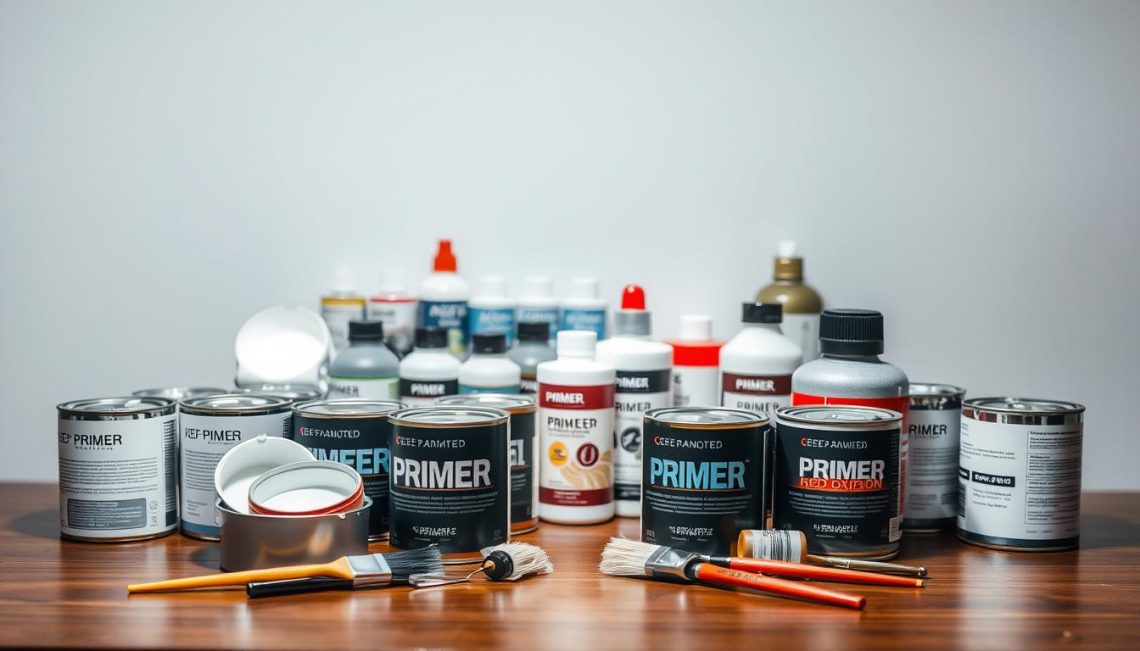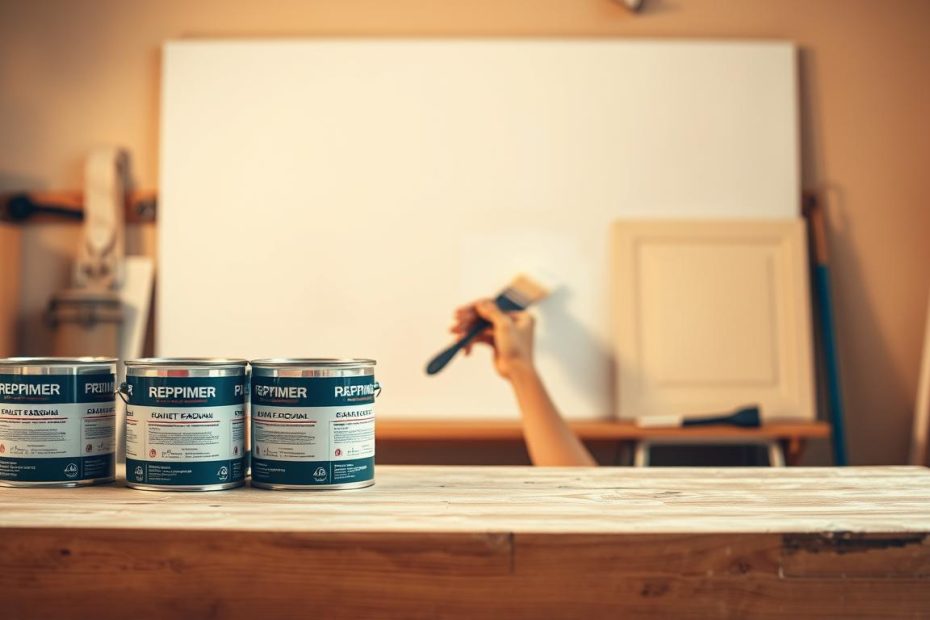When it comes to painting, primer is a crucial step that can make or break the final result. We often find ourselves wondering about the ideal number of coats to apply for a professional-looking finish.
Understanding primer basics is essential to achieving the desired outcome. The number of coats of primer needed depends on several factors, including the surface you’re working with and the type of primer you’re using.
We will guide you through the process, helping you determine the right number of coats for different surfaces and applying primer like a pro. By the end of this article, you’ll be equipped with the knowledge to achieve a flawless finish.
Understanding Primer Basics and Its Purpose
Primer is the unsung hero of painting, providing a uniform base that ensures paint adheres well and lasts longer. We often overlook the importance of primer, but it plays a crucial role in the success of our painting projects.
What Primer Does for Your Surfaces
Primer helps create a uniform surface for painting, covering stains and enhancing paint adhesion. This results in a smoother finish and longer-lasting paint job. By using primer, we can ensure that our paint adheres well to the surface, reducing the risk of peeling or flaking.
Different Types of Primers and Their Applications
There are various primers available, each designed for specific surfaces such as wood, metal, and drywall. Choosing the right primer for our project is essential to achieve the best results. For example, a primer designed for metal surfaces will provide better adhesion and corrosion protection than a standard primer.
| Surface Type | Recommended Primer | Benefits |
|---|---|---|
| Wood | Wood Primer | Seals pores, reduces staining |
| Metal | Metal Primer | Corrosion protection, improved adhesion |
| Drywall | Drywall Primer | Seals joint compound, uniform finish |
When You Can Skip Primer (and When You Absolutely Cannot)
While primer is essential for most painting projects, there are situations where it can be skipped, such as when repainting a surface with the same color and type of paint. However, if we’re changing colors, painting over a dark or bold color, or covering stains, primer is a must.
How Many Coats Of Primer You Need for Different Surfaces
Primer application isn’t one-size-fits-all; the surface type plays a significant role in determining the number of coats required. The condition and material of the surface you’re about to paint dictate not just the type of primer, but also how many coats you’ll need for optimal results.
Walls and Ceilings
Walls and ceilings are among the most common surfaces that require priming. The number of coats needed can vary based on their condition and previous treatments.
New Drywall
For new drywall, a single coat of primer is typically sufficient to create a uniform surface for painting. This helps in covering the drywall’s paper surface and the joint compound used between panels.
Previously Painted Surfaces
If the surface has been previously painted, it might not need a primer at all, unless the existing paint is in poor condition or you’re making a drastic color change. A light coat of primer can be beneficial in such cases to ensure better adhesion and coverage.
Covering Stains and Odors
Surfaces with stains or odors, such as those caused by water damage or smoke, may require a specialized primer. These primers are designed to block stains and neutralize odors. Multiple coats may be necessary to fully cover the stain or eliminate the odor.

Wood Surfaces
Wood surfaces present their own set of challenges when it comes to priming. The type of wood and its condition can significantly affect the number of coats required.
Bare Wood
Bare wood usually needs at least one coat of primer to seal the surface and enhance paint adhesion. This is especially true for softwoods, which can absorb primer unevenly.
Stained or Painted Wood
If the wood is already stained or painted, the condition of the existing finish will determine if a primer is needed. A primer can help in achieving a uniform color and ensuring better paint adhesion.
MDF and Composite Materials
MDF (Medium-Density Fiberboard) and other composite materials often require a primer to seal the surface and prevent the paint from soaking in unevenly. A single coat is usually sufficient, but this can depend on the density of the material.
Metal, Plastic, and Specialty Surfaces
For metal, plastic, and other specialty surfaces, the choice of primer is critical. These surfaces often require specialized primers that are formulated to adhere well to non-porous or slick surfaces. The number of coats can vary based on the primer’s quality and the surface’s condition.
“The right primer can make all the difference when working with challenging surfaces like metal or plastic.”
Dark to Light Color Transitions
When transitioning from a dark color to a significantly lighter one, additional coats of primer may be necessary to fully cover the darker hue. This is because primer is more effective at covering bold colors than paint alone.
- Use a high-quality primer designed for color transitions.
- Apply multiple thin coats, allowing each coat to dry before applying the next.
- Consider tinting your primer to a color closer to your final paint color to reduce the number of coats needed.
By understanding the specific needs of your surface, you can determine the right number of primer coats for your project, ensuring a professional-looking finish.
Applying Primer Like a Pro
Applying primer correctly is crucial for a smooth, even finish. To achieve professional-looking results, we need to prepare the surface properly, choose the right application tool, and work in the right conditions.
Start by ensuring the surface is clean and dry. We recommend applying primer in thin, even coats, allowing adequate drying time between coats. Using the right primer for the surface and following the manufacturer’s instructions makes a big difference.
Some valuable primer tips include using a roller for large, flat areas and a brush for edges and corners. For a flawless finish, we suggest working in a well-ventilated area and maintaining a consistent temperature.
By following these expert primer tips and tricks, we can ensure a flawless base for our paint, resulting in a professional-looking finish that lasts.
